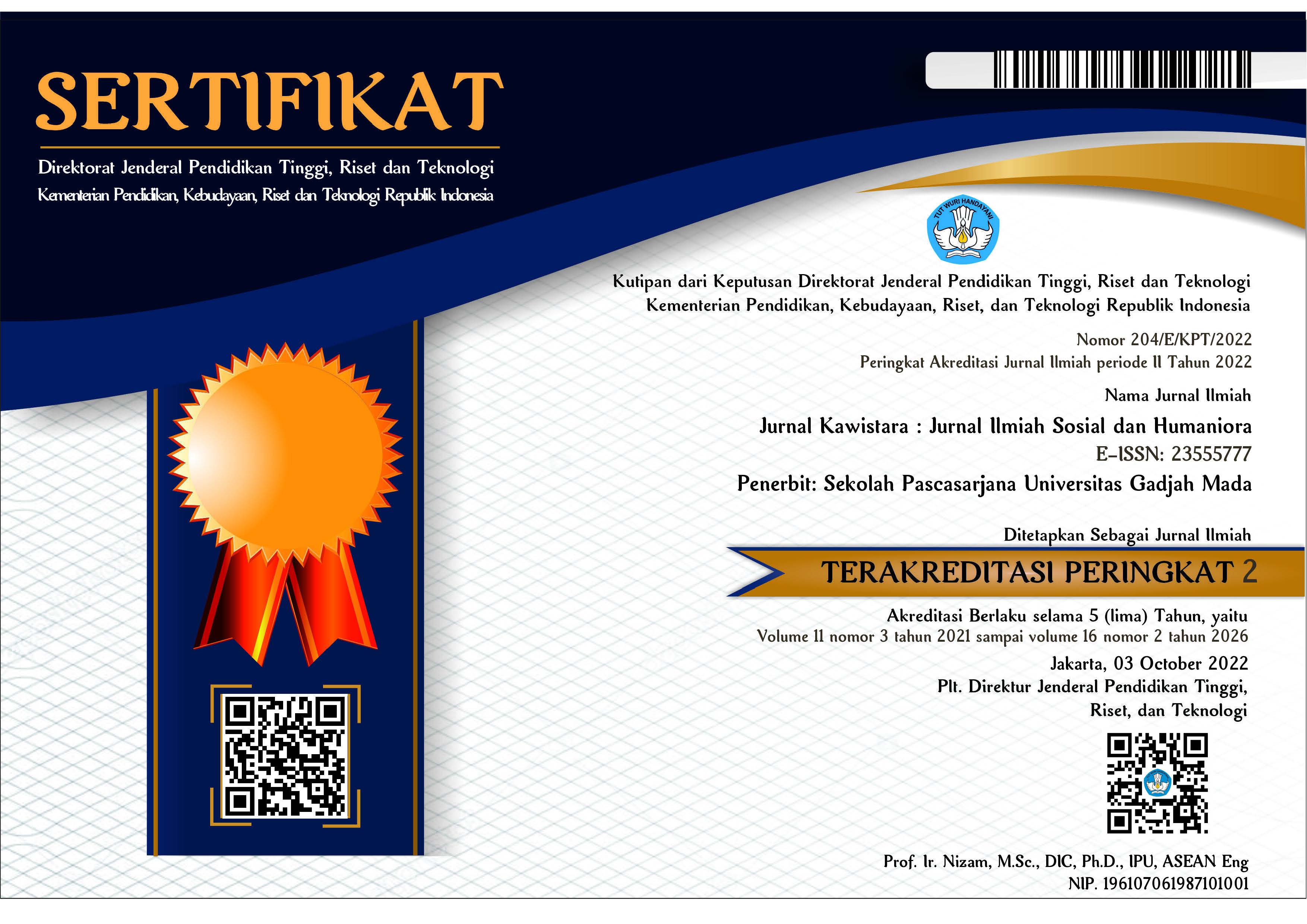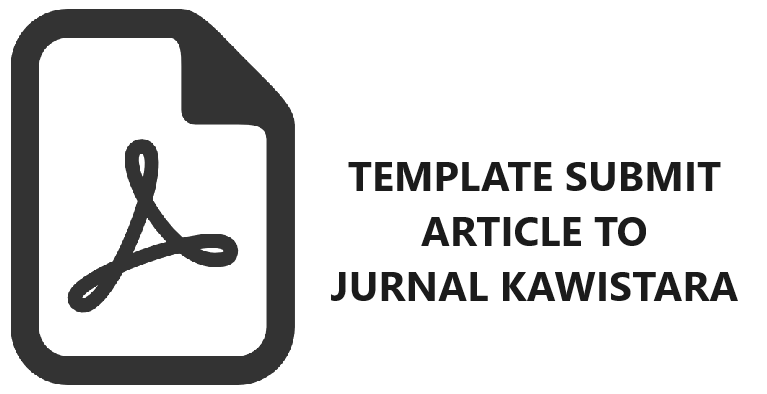Konstruksi Identitas Niqabis melalui Selfie Instagram
Diana Safinda Asran(1*), Wening Udasmoro(2)
(1) Universitas Gadjah Mada
(2) Universitas Gadjah Mada
(*) Corresponding Author
Abstract
The media has long been used by certain religious communities to introduce their culture in society. Like the veiled Muslim group on Instagram which is called the niqabis. Automatically the existence of the niqabis is getting closer to society and is reaping significant popularity. Now the niqab is not only an attribute of religion, but also as part of an identity to a commodity of political economy. In this research, we will study further how niqabis use posts, especially selfies to construct their identity through Instagram, as done by @diananurliana and @wardahmaulina_. Diana Nurliana and Wardah Maulina are influencers and have consistently built their identity as niqabis. The analysis carried out on the two accounts shows that identity is formed through selfies with information. Both Diana and Wardah take advantage of eye gaze, frame size to corner to be prepared with the viewer. While the caption is used to provide information on photos and also as a space for expression and opinion. On the other hand, what is uploaded also aims to form subjectivity to create branding.
Keywords: Identity; Instagram; Niqab; Niqabis; Selfie.
Keywords
Full Text:
PDFReferences
- Bauman, Z. (2004). Identity (2 ed.). Cambridge: Polity Press.
- Baulch, E., & Pramiyanti, A. (2018). Hijabers on Instagram: Using Visual Social Media to Construct the Ideal Muslim Woman. Social Media and Society, 4(4). https://doi. org/10.1177/2056305118800308
- Foucault, M. (1986). The Care of the Self: Volume 3 of the History of Sexuality. New York: Pantheon Books.
- Goleman, Boyatzis, Richard. (2019). Body/ Embodiment Symbolic Interaction. In Journal of Chemical Information and Modeling, 53 (9). https://doi. org/10.1017/CBO9781107415324.00
- Kress, G., & Van Leeuwen, T. (2006). Reading images: The grammar of visual design. New York: Routledge.
- Manokha, I. (2018). Surveillance, Panopticism, and Self-Discipline in the Digital Age. Surveillance & Society, 16(2), 219-237 https://doi.org/10.24908/ ss.v16i2.8346
- McLaren, M. A. (2002). Feminism, Foucault, and embodied subjectivity. Albany, NY: State University of New York Press.
- Sarah J. Jackson, Brooke Foucault Welles, Hijacking #MYNYPD: Social Media Dissent and Networked Counterpublics, Journal of Communication, Volume 65, Issue 6, December 2015, Pages 932–952, https://doi.org/10.1111/jcom.12185
- Rauschnabel, P. A., Sheldon, P., & Herzfeldt, E. (2019). What motivates users to hashtag on social media? Psychology and Marketing, 36(5), 473–488. https://doi.org/10.1002/mar.21191
- Rettberg, J. W. (2016). Seeing Ourselves Through Technology: How We Use Selfies, Blogs and Wearable Devices to See and Shape Ourselves. London: Palgrave Macmillan.
- Panek, E. T., Nardis, Y., & Konrath, S. (2013). Mirror Or Megaphone?: How Relationships Between Narcissism And Social Networking Site Use Differ On Facebook And Twitter. Computers in Human Behavior, 29(5), 2004-2012. https://doi. org/10.1016/j.chb.2013.04.012.
- Waskul, D., & Vannini, P. (2006). Body/ Embodiment : Symbolic Interaction And The Sociology Of The Body. Hampshire: Ashgate Publishing Limited.
- White, A. (2003). Womens ’ Usage of Specific Linguistic Functions in the Context of Casual Conversation : Analysis and Discussion. Birmingham: University of Birmingham.
- Wickel, T. M. (2015). Narcissism and Social Networking Sites : The Act of Taking Selfies. Elon Journal of Undergraduate Research in Communications, 6(1). Retrieved from http://www. inquiriesjournal.com/a?id=1138
- Zylinska, J. (2012). Between page and screen : remaking literature through cinema and cyberspace. New York: Fordham University Press.
Article Metrics
Refbacks
- There are currently no refbacks.
Copyright (c) 2020 Diana Safinda Asran, Wening Udasmoro

This work is licensed under a Creative Commons Attribution-ShareAlike 4.0 International License.
Jurnal Kawistara is published by the Graduate School, Universitas Gadjah Mada.











